JQ Magazine: Japan Day @ Central Park Reels in the Crowds
By Alma Jennings (Fukushima-ken, 2008-10) for JQ magazine. Alma works at Japan Society in New York as a development assistant in foundation and government relations.
The sixth annual Japan Day @ Central Park took place on a warm Sunday May 13. Over 40,000 people attended the event, which featured live performances, Japanese games and language lessons, and the four-mile “Japan Run.” This year also marked the triumphant return of food tents, where volunteers dished out free sushi, udon, Pocky, and other Japanese vittles to hungry visitors.
According to their homepage, the goals of Japan Day are to build bridges of understanding between the people of Japan and the U.S., showcase the local Japanese community’s appreciation toward New York, and facilitate stronger grassroots connections within the local Japanese community. This year, the JET Alumni Association of New York (JETAANY) teamed up with Japan Society, a New York City-based organization that deepens understanding between the U.S. and Japan, to offer traditional Japanese “yo-yo fishing.” In this addictive game, participants try to win a colorful balloon by using a paper hook to lift it from a pool of water. Volunteers from the Japan Local Government Center, Mitsubishi, K Line Logistics, Mirai IT International, and the Bronx Science Key Club also provided much appreciated help at the tent.
The cute yo-yos look deceptively easy to make. In fact, they are tricky to make and can get messy. Volunteers showed up hours before the event began to blow up the balloons, which tend to deflate over a few days and thus couldn’t be made in advance. Japan Society’s director of special events and JET alum Christy Jones (Nagasaki-ken, 1995-98) served as the yo-yo activity organizer on behalf of the Society, encouraging Japan Society’s staff and JET alums to prepare thousands of paper hooks before the big day.
JETAA British Columbia Newsletter – May 2012
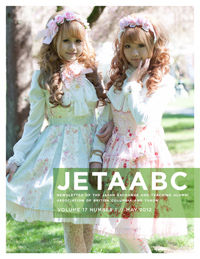 The latest issue of the JETAABC Newsletter is now available. In the first issue of the new cycle, they talk about Sakura Days Japan Fair, the Changing Tides Silent Auction, Photohoku, and much more, directly from Vancouver!
The latest issue of the JETAABC Newsletter is now available. In the first issue of the new cycle, they talk about Sakura Days Japan Fair, the Changing Tides Silent Auction, Photohoku, and much more, directly from Vancouver!
- PDF: http://www.jetaabc.ca/wp-content/uploads/2012/05/NewsletterV17N1.pdf
- Online viewer version on Issuu.com at http://issuu.com/jetaabc/docs/newsletterv17n1
JETAABC Newsletter: An Interview with Photohoku
By Wanda Yee (Fukui-ken, 2001-07) for JETAABC Newsletter. Wanda is the Social Media Coordinator at JETAABritish Columbia.
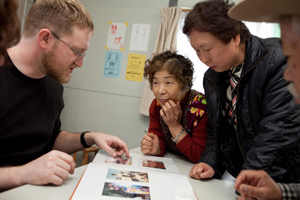
© Satoshi Narita
What is Photohoku and how (and why) did you become involved with this project?
Photohoku is a family photo-album building project for those affected by the events of March 11th. It’s a portmanteau blending of the words Photo and Tohoku. It was officially started on September 11th of 2011 by myself (Brian Scott Peterson) and our co-founder, Yuko Yoshikawa. We became involved in the project having collaborated on another Tokyo-based project called Tokyo Kids Photo.
Basically we go to the earthquake and tsunami affected areas of Tohoku, armed with instant cameras and instant film and find families who lost all their photos in the disaster and make new photos for them. We put those photos in a new family album for them and present that newly started album to the families. If the families don’t have a camera, we also give them a retired digital camera we’ve collected as donations from our friends and families. Finally, on subsequent trips, we print the photos from the cameras with have given and add those photos to the albums as well so they can continue them. Basically help them start their photographic lives over.
How did Photohoku evolve from being just an idea to becoming a full-on reality? Read More
JQ Magazine: JQ&A with Director Regge Life on ‘Live Your Dream: The Taylor Anderson Story’
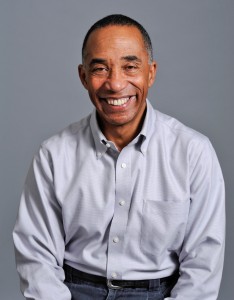
“‘Live Your Dream’ is principally about Taylor, but it is actually the story of all the JETs who come to Japan, so I really want to look at what the experience is for a variety of people and how that experience changes both the teacher and the students they interact with.”
By Renay Loper (Iwate-ken, 2006-07) for JQ magazine. Renay is a freelance writer and associate program officer at the Japan Foundation Center for Global Partnership. Visit her blog at Atlas in Her Hand.
Live Your Dream: The Taylor Anderson Story is the latest work by filmmaker and Global Film Network founder Regge Life, who has been making groundbreaking films for over two decades including the acclaimed Doubles: Japan and America’s Intercultural Children, and most recently Reason to Hope, which chronicles the events surrounding the 2010 Haiti earthquake. Live Your Dream not only shares the story of JET alum Taylor Anderson (Miyagi-ken, 2008-11) who tragically lost her life in the 2011 tsunami, but it also seeks to celebrate the lives of those who live their dreams and inspire others to make a difference. JQ caught up with Life to discuss the film, which is being prepared for a November release.
Your relationship with Japan spans over two decades. What stirred you to first go there, and how has this relationship grown over time?
This is a question with a very long answer, so let me try to be brief and to the point as possible. Japanese film has always intrigued me, so as a young filmmaker I would watch marathons of Japanese films at a cinema on Eighth Avenue called the Elgin. After years and so many movies, I was introduced to the Creative Artists Program of the NEA and Bunka-cho, and that is how I went the first time to witness the making of Tora-san #43.
How has it grown? Well, leaps and bounds. Four completed films, almost four years in residence in Tokyo, and a current feature project in development for almost 10 years.
What inspired you to make this film and document Taylor’s story?
Like most people, watching what was happening [during the time of the tsunami and earthquake] was mind-boggling and devastating. I have never been to Ishinomaki before, but I have been to Hachinohe, Morioka, Ichinoseki, and other parts of the region; so when I saw water rushing over rice fields like that and trucks and cars being carried—I just couldn’t believe it. It was devastating [to watch] for someone who has never been there before, but when you have been there, you [can better understand] the magnitude of what was happening. So at that time I’d just finished the film about Haiti, and from my work there, I realized there was probably going to be a story that needed to be told: something that no one would cover.
I don’t remember where I saw the fist e-mail about Taylor’s story or how it came to be, I just remember reading about her online. I made a few calls and one thing lead to the next, and slowly but surely, I was able to get in touch with Taylor’s family. And even still, it was all about timing. As a parent, I would have completely understood if no one got back to me. Then suddenly, I got this email from Andy, Taylor’s father. Giving him credit, he did his due diligence and did some research on me and became familiar with my work. [This all happened] at a time when they were swarmed by the media, so I took my time and we worked as they were comfortable.
Every step of the way, I checked in. Andy connected me with some of Taylor’s friends from Ishinomaki, so when I went back to Japan, I carved out some time to spend with them. One of her friends picked me up from the train station and that’s when it really hit me. At that time [the devastated area] was pretty much cleaned up—but even still, there was a lot to be done. Visiting Ishinomaki and meeting [Taylor’s] friends solidified it with me. I knew I needed to share her story.
Since this is a documentary about a JET participant, what cooperation did you receive from JET Program itself for the making of the film?
The CLAIR office in Japan was very generous to the film and made a remarkable pledge. We also received support directly from one of the people on staff! The JET alumni chapter in New York City (JETAANY) was also very generous, as well as JETs from all over the U.S. and even abroad.
Justin’s Japan: Roland Kelts Makes New ‘Monkey Business’ at Japan Night @ Joe’s Pub
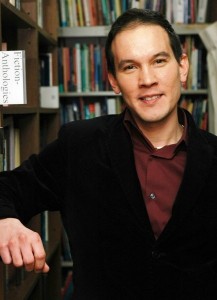
JET alum and ‘Monkey Business’ editor Roland Kelts will appear at Japan Night @ Joe’s Pub in New York May 6. (Kaz)
By JQ magazine editor Justin Tedaldi (CIR Kobe-shi, 2001-02) for Examiner.com. Visit his Japanese culture page here for related stories.
Regular visitors to NoHo’s St. Mark’s Place are known to enjoy many of the Japanese pubs and eateries that dot the street down to Avenue A. This Sunday (May 6), neighbor Joe’s Pub will host live music and the latest English release of a notable Nippon-centric literary anthology.
Japan Night @ Joe’s Pub, held at the eponymous nightclub a stone’s throw below Astor Place, promises an unforgettable night of transcultural readings, music and live performances. On tap for Sunday: revered Japanese writers Masatsugu Ono, Tomoko Shibasaki, and award-winning author and translator Motoyuki Shibata will arrive from Tokyo to share the stage with American authors Stuart Dybek, Kelly Link, and Canadian translator, scholar and editor Ted Goossen.
The scriveners’ summit will celebrate the second Issue of Monkey Business International, the latest English-language edition of the acclaimed Japanese literary magazine that Pulitzer-winning author Junot Díaz calls “one of the year’s best publications” and Luna Park Review dubbed “one of the seven best literary magazines of 2011.”
Emceeing is JET alum (Osaka-shi, 1998-99), Japanamerica author and Monkey Business contributing editor Roland Kelts (click here for an exclusive interview conducted with Kelts last year), who describes the literary project as “all about dear friends calling upon me to be a bridge between the worlds I inhabit, write about and know best—giving me an enormous opportunity to feel a momentary spurt of self-worth.”
For the complete story, click here.
JQ Magazine: Petals Underfoot at Brooklyn’s Sakura Matsuri
By Preston Hatfield (Yamanashi-ken, 2009-10) for JQ magazine. Preston moved from San Francisco to New York City in January 2012 and is now accepting submissions from people who want to be his friend. Abduct him from his house in the middle of the night, or find him on Facebook and ask about his JET blog in which he details his exploits and misadventures in that crazy Land of the Rising Sun we all love.
In the end I find myself in Cherry Esplanade, sinking to the ground, my back comfortable against the broad face of a cherry tree whose gnarled and mostly barren branches still sported a few late blossoms flitting in the breeze, the petals of those that had come before it strewn across the grounds, specking the meadow in gentle shades of pink. It’s an act of defeat, really; an act of resignation.
I never did find that damn press table.
* * *
I arrived early, as planned, eager to take in the 31st Annual Sakura Matsuri at the Brooklyn Botanic Garden. It was my first matsuri since moving to New York in January, my first trip to the Garden. I was stoked.
As instructed, I went to the entrance designated for performers, event staff and press and told the man at the front desk who I was. After consulting his clipboard and giving me a skeptical look, he let me in and gave me directions to the tent where I could pick up my press kit and thank the publicist for giving JQ magazine and myself the opportunity to cover the event. I set off, and once inside was instantly struck by how large the Brooklyn Botanic Garden really is. Droves of people had shown up for the event, a fair number of them in costume, though conspicuously, from where I stood just outside the visitor center, it was not readily apparent where the main event was being held. As I continued walking down the path, I was growing more and more sure that either the guy at the front desk either gave me poor instructions, or I was poor at following them (and this would not surprise most people who know me, least of all my mom or some of my elementary school arts and crafts teachers).
Leave it to me to let this bother me, to knock impatiently at the door of my mind so loudly that I was unable to really take in and appreciate my surroundings. Find the press table. That is the first priority. Enjoying myself can come later.
Justin’s Japan: Kota Yamazaki and Sakura Matsuri Return to New York
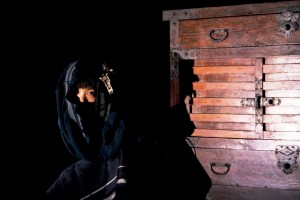
Dance performance Kota Yamazaki/’Fluid hug-hug (glowing)’ will be held at New York's Japan Society April 27-28. (Ryutaro Mishima)
By JQ magazine editor Justin Tedaldi (CIR Kobe-shi, 2001-02). Visit his Examiner.com page here for related stories.
Following a month of concerts from all types of Japanese musicians, New York City bids sayonara to April this weekend with an exciting pair of performances from a Bessie Award-winning performance artist, followed by the 31st edition of one of Brooklyn’s finest annual events.
Kicking things off tonight (April 27) and tomorrow at Japan Society is the performance of Kota Yamazaki/Fluid hug-hug (glowing), the Society’s newest commissioned work by the butoh-trained choreographer. In this new work that will appeal to fans of dance, Yamazaki re-examines the fundamentals of butoh, the form in which he received his training, as six dancers hailing from Senegal, Ethiopia, Japan, and the U.S., perform within a set constructed to evoke the soft lighting and dim interior of a traditional Japanese house, where shadows contribute to a visual atmosphere.
The performance, which made successful stops earlier this month at the Andy Warhol Museum in Pittsburgh and the Painted Bride Arts Center in Philadelphia, draws its inspiration from the world-renowned essay In’ei Raisan (In Praise of Shadows) by the great modern Japanese novelist Jun’ichiro Tanizaki. First published in 1933 and in English in 1977, it has itself been praised the world over, with the Guardian calling it a “hymn to nuance.”
For the complete story, click here.
 Australian JET alum Pepi Ronalds (Miyagi-ken, Sendai Shi, 2010-11) recently published an essay on Amazon titled “After Shock: Experiencing the 2011 Japanese Earthquake.” Below is a bit of context from Ronalds along with an extract from the essay:
Australian JET alum Pepi Ronalds (Miyagi-ken, Sendai Shi, 2010-11) recently published an essay on Amazon titled “After Shock: Experiencing the 2011 Japanese Earthquake.” Below is a bit of context from Ronalds along with an extract from the essay:
About Pepi
Pepi is a freelance writer, ghostwriter and researcher based in Melbourne, Australia. On any given day she is found writing, researching and craving sakuranbo soft-cream from the Omiyage shop below Yamadera. While working as an ALT in Sendai Shi, Miyagi prefecture she experienced the Great East Japan Earthquake first hand. She writes about the experience in her long-form article After Shock: Experiencing the 2011 Japanese Earthquake, which can be downloaded via Amazon or Pepi’s website http://www.pepironalds.com.
“After finishing JET I returned to the freelance writing career that I had begun in late 2009. As a writer of non-fiction, I was keen to write about my experience of the triple disaster in Sendai. I knew that many people outside of Japan had a limited understanding of what had happened. – Yes, I was caught up in a natural disaster as a foreigner, and yes it was scary. But there was (and continues to be) so much more to my experience (and those of my fellow JETs and gaijins). I was astounded by the incredible generosity of my Japanese friends and colleagues, and the work they’ve done (and are doing) to rebuild.”
As publishing paradigms change, I there are fewer venues for long-form articles like mine. So in publishing this article I made my first foray into ‘entrepreneurial journalism’. That is, I am selling direct to readers. Below is an extract. If you want to read the whole thing (6,500 words) you can either download the article via Amazon, or buy direct from me using Paypal.”
Extract from After Shock: Experiencing the 2011 Japanese Earthquake
“We started the heaters,” my friend Yuriko writes, “but we are trying not to use them often to save them in case of an emergency.” I know the school in Sendai to which she refers. Winter is marked by a meter of snow on the baseball field. It’s sustained by snowflakes the size of marshmallows that seem to fall horizontally. The winds wheeze and rattle at loose windows. When I was there last year, I was constantly dabbing my nose with a tissue. And when my friend writes this from Sendai eight months after the earthquake, winter in Japan has barely begun.
I read her email and think back to that frigid Friday, March 11, 2011. My students and I were decorating the walls of the school with a mosaic of origami-paper blossoms. It was so cold in the unheated hallway that my fingers seemed to move in slow motion. We worked with a feeling of purpose and excitement. Then there was a long, deep, foreboding yawp. An announcement from the earth beneath us that everything was about to change. Read More
JQ Magazine: JQ&A with JET Alum Kalu ‘Kaz’ Obuka of Meta-Culture

"My time on JET bolstered my thinking that we need better institutions and processes for dealing with difference. To its credit, the prefecture I worked in was definitely ahead of the curve."
By Renay Loper (Iwate-ken, 2006-07) for JQ magazine. Renay is a freelance writer and associate program officer at the Japan Foundation Center for Global Partnership. Visit her blog at Atlas in Her Hand.
Originally from London, Kalu “Kaz” Obuka (Saitama-ken, 2005-08) is currently working as a conflict resolution specialist at Meta-Culture, a conflict resolution NGO in Bangalore, India. Having a unique career fueled by his graduate studies in Coexistence and Conflict at Brandeis University paired with his time on JET, Kaz spent a little time with us to share more.
How did your time on JET influence your decision to take up your particular course of study?
My time on JET bolstered my thinking that we need better institutions and processes for dealing with difference. I think it was seeing the way that the institutions I worked with were absolutely out of their depth when, for example, it came to dealing with pupils with migratory backgrounds. To its credit, the prefecture I worked in was definitely ahead of the curve, and was actively looking to develop mechanisms and services for immigrants to help them navigate what, in some cases, would be a very alien cultural landscape.
Aside from immigration, it was seeing the way politics played out, especially the posturing with which the Japanese and their neighbors engaged one another, and their history.
How did your JET experience help you to secure your position at Meta-Culture?
I think my JET experience helped me to the extent that it bolstered my desire to enter the conflict resolution and consensus building field.
What fields did you work in prior to JET?
Prior to JET I dabbled in the NGO sector with an organization that worked to empower disadvantaged youth in London, as well as PR and some professional modeling.
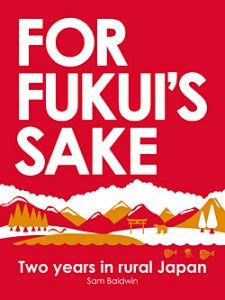
"The author's final thoughts about his stay in Japan struck a chord with me. Though many people seek adventures in foreign lands, if they stay in one place long enough, they often find it's the people they befriended that end up meaning the most to them upon their departure." (Baka Books)
By Tim Martin (Fukui-ken, 2006-08) for JQ magazine. Tim works as a research assistant in a neuroscience lab, and is an avid swing and blues dancer in New York City. He runs a humanist/atheist blog, The Floating Lantern, and is looking for ways to make a difference in people’s lives.
Fukui is a rural, out-of-the-way prefecture, relatively unfamiliar even to the Japanese. It boasts the largest number of nuclear reactors in the country, but only a single Starbucks. It’s home to a Buddha statue larger than the one in Nara, which, curiously, very few tourists come to visit. Fukui also has an amusing reputation for getting terrible reviews from authors who’ve passed through—in his book Hitching Rides with Buddha (aka Hokkaido Highway Blues), fellow JET alumni author Will Ferguson (Nagasaki-ken, 1991-94) describes it, only half-jokingly, as “a hole.”
So it’s an interesting place.
It’s also where Sam Baldwin (Fukui-ken, 2004-06) ended up when he applied to teach English in Japan as a member of the JET Program. In For Fukui’s Sake, Baldwin recounts tales from his two-year stay in this quirky rural backwater, weaving together the varied strands of his experience to form a continuous narrative of adventure and personal growth.
While working a monotonous job as a “research lab technician” in the UK, Baldwin decided he needed to broaden his horizons. Looking to discover what else life could offer, he set his sights on Japan, which, according to a friend who had visited, was a place where Baldwin could indulge in his love of snow and mountains. This may be a casual way to make the decision to start a new job in a strange country, but the required spontaneity and openness to new experiences may be what ultimately allowed the author to glean so much from his time in Japan.
JQ Magazine: Life after JET – The Employment Conundrum
By Geneva Marie (Niigata-ken, 2008-09) for JQ magazine. Geneva works as an account manager in the vast Great Plains a.k.a. Omaha, Nebraska and is a (sometimes) contributor to JETwit. Contact Geneva at geneva [dot] sarni [at] gmail [dot] com and visit her on LinkedIn.
It’s 8 a.m. on a chilly morning in December and I’m sitting at my desk in a thoroughly nondescript building located on the edge of Omaha, Nebraska’s suburban sprawl. I’m checking my interoffice e-mail and yielding phone calls—typical cube-rat chores. I’ve got my coffee and my Spotify, and oh right, I’m writing this article during my downtime. When I think about my daily routine, I realize that it’s a far cry from what I was doing two and a half years ago when I was teaching English to elementary and middle school students in rural northern Japan on the JET Program.
Like everyone who returns from living abroad, I found myself suffering from the typical culture shock and malaise. However, the readjustment to regular life, a regular job, and a regular me—the life I had before my time on JET—has been a continuous uphill battle. It’s been a very trying two years, a strange journey that has somehow left me feeling isolated and worlds away from my former home in Japan, taking me to a place I never thought I’d end up in. Not to mention feeling like I will never get the chance to work in a Japan-related field anytime soon.
My story begins in the frozen metropolis of Minneapolis, where as a 24-year-old, non-traditional student I reenrolled in college at the University of Minnesota as an Asian studies major (emphasis in Japanese, of course). Admittedly, I wasn’t the best Japanese student. I was older than most of my peers and thus (I felt), at a disadvantage. I struggled through two years of language learning before deciding at 26 to embark on my first trip out of the country—a study abroad in Tokyo. It was a life-altering experience for me and probably the most expensive thing I have ever done. It was so life-changing that I often look back at life in my twenties as “before and after Japan.”
Justin’s Japan: April in New York Attracts Japan-Centric Music, Performing Arts
By JQ magazine editor Justin Tedaldi (CIR Kobe-shi, 2001-02). Visit his Examiner.com page here for related stories.
As the sakura (cherry trees) blossom in the Big Apple, so does the sheer amount of Japanese talent in music and performing arts coming to Manhattan this month. Here are some highlights guaranteed to appeal to audiophiles of all stripes.
April 6-14, 8:30 p.m.
‘Floating Point Waves’
A performance experience of dance, real-time video, live electronic music, kinetic sculptures and meditative stillness, Floating Point Waves unveils the relationship between the human body and natural elements. This HERE Artist Residency Program (HARP) production plays for 8 performances
Conceived and designed by Ximena Garnica (a Colombia-born graduate of the Akira Kasai Tenshikan Dance Institute in Tokyo) and Shige Moriya (a Japanese-born video and installation artist) in collaboration with Jeremy D. Slater and Solomon Weisbard, Floating Point Waves stars Garnica in a place where movement, water, and light respond to one another as an organic causal chain unfolds, echoing that of our own natural world. Startling performance and exquisite design reverberate through the space, framing a landscape where beauty coexists with darkness.
April 10, 8:00 and 10:30 p.m.
Hiromi
Nearly a decade after her Telarc debut album Another Mind (which won the Recording Industry Association of Japan’s Jazz Album of the Year Award), global superstar pianist Hiromi Uehara has been enchanting New York audiences ever since, with high profile appearances at the Blue Note Jazz Club, Highline Ballroom and Carnegie Hall. At 33 and with nearly a decade of tremendous accolades to her name, the Hamamatsu native stands at the threshold of limitless possibility.
Article: Yamabushi Onsen Yupoka in Tsuruoka
JETAA Philadelphia Subchapter rep Rashaad Jorden wrote the following article for the Japan Tourist website (a great example of JETs helping to promote “local” tourism for Japan):
Most people feel tired after climbing Mount Haguro, one of the Three Mountains of Dewa (also known as Dewa Sanzan). However, a short drive away, Haguro (the village where Mount Haguro is located) offers a nice place where you can relax your body and mind—and have a beer or two.
Yamabushi Onsen Yupoka—better known as simply Yupoka—is a popular gathering spot for locals and some yamabushi, Japan’s mountain ascetics, who come to Dewa Sanzan to embark on a mountain pilgrimage and venerate their deities.
Yupoka is an insider’s tip as there is no mention of the place in the English-language tourism brochure of Haguro but those who find it will be treated to a majestic setting for a dip in hot water, which is what most people come to Yupoka for.
Perspectives: “A Glass Half Full: Japan’s Disaster Response at One Year” by James Gannon
The below article by Jim Gannon (Ehime-ken, 1992-94), Executive Director of the Japan Center for International Exchange (JCIE/USA), appeared originally on Smart Assets: The New York Philanthropy Blog.
“A Glass Half Full: Japan’s Disaster Response at One Year”
Here’s an excerpt:
One constant refrain in the disaster zone is the need for more effective mental health interventions. Women who lost family members, men who are ashamed that they can no longer support their families, and children traumatized by the disaster are all grappling with psychological trauma. In response, numerous Japanese nonprofits have established salons and other kokoro no kea (literally, “caring for the heart”) programs to give survivors opportunities to socialize, but these tend be rudimentary in nature, with little input from experienced mental health professionals, and they often fail to engage people at risk who are unlikely to seek out support on their own. Overseas funders can make a difference by encouraging and supporting more specialized and nuanced approaches.
Greater support is also needed for economic revitalization. A number of innovative programs have been launched to jumpstart local economies. In Kamaishi, for instance, the Fuji Social Welfare Council has started renting food trucks to unemployed chefs who lost their restaurants so they can get back on their feet. The trucks also help stimulate economic activity by gathering where new shops are opening in order to attract local residents. Meanwhile, numerous groups are pioneering new methods for small donor support of fisheries and oyster farmers in return for promised portions of future harvests. However, these efforts are only a drop in the bucket, and much greater investment is required.
A third area where funding from the United States and elsewhere can have a particularly significant impact is non-governmental organization (NGO) capacity building. Hundreds of small nonprofits have been established in the wake of the disaster, and while many will eventually fail, others have the potential to prosper and produce the next generation of Japan’s nonprofit leaders. However, the nonprofit sector can only live up to its potential if it becomes more professionalized and if the infrastructure that supports it is strengthened.
JQ Magazine: Concert Review – L’Arc~en~Ciel Take Madison Square Garden by Storm
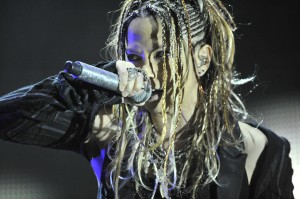
L'Arc~en~Ciel frontman hyde at the band's historic Madison Square Garden show, March 25, 2012. (Courtesy of BAM! Marketing, Publicity & Promotions)
By Sam Frank, an ALT who taught English in Hiraizumi-Cho, Iwate-ken, from 2002-04 and worked in Shirahama-cho, Wakayama-ken as a JET from 2004-06, for JQ magazine. He currently manages the New York division of UnRated magazine and works as a project manager/Web producer at Arrow Root Media.
A few years ago I went to the MTV Video Music Awards in Japan, and noticed something interesting. Whenever categories came up where American artists went against Japanese artists, nine out of ten times, the American would win, and not even be in attendance to accept the award. It seemed so unfair to compare American artists to their Japanese counterparts when you think about how many American bands have sold out stadiums in Tokyo while most Japanese bands that tour America have a hard time filling up mid-size venues such as Roseland Ballroom and Irving Plaza in Manhattan. That comparison doesn’t seem quite so unfair after watching L’Arc~en~Ciel (French for rainbow), a band formed in Osaka, cement its name in rock history as the first Japanese band to perform at New York City’s famed Madison Square Garden on March 25.
In celebration of the band’s 20th anniversary making music together, hyde (lead vocals), tetsuya (bass), ken (guitar), and yukihiro (drums) have taken their dynamic visual spectacle around the globe to thank fans in true rock star fashion. The show got underway with an epic opening video displaying the band members’ names carved in platinum scrolling across the screen before showing a beautiful butterfly landing in Hyde’s glove-clad palm.
As the excited crowd eagerly waved their florescent glow sticks in anticipation, L’Arc~en~Ciel stormed the stage backed by the enchanting piano intro to “Ibara no Namida” (いばらの涙). The instant the spotlight dropped on hyde, the Garden erupted into a surge of screams and cheers for the international superstar. Juxtaposing band members with various computer generated ethereal images, songs like “Good Luck My Way,” the theme song to 2011′s FullMetal Alchemist The Movie: The Sacred Star of Milos, “My Heart Draws a Dream,” and “Honey” all came to life in a fresh and exciting way. The visual narratives added another level of interactivity to each song, which is why concertgoers who might not be familiar with songs like 1999′s “Driver’s High” will remember it as the song that opened with a revving engine sound, pyrotechnics, and images of white smoke spreading across the three gigantic LED screens.
For the complete story, click here.





